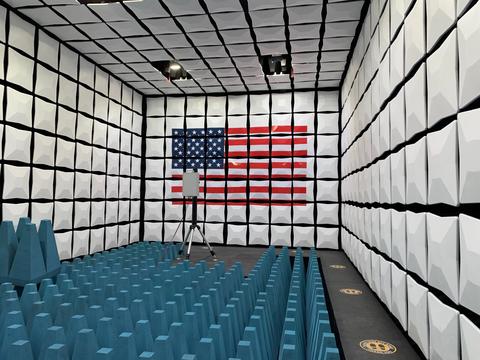Summary
Spectrum is a limited national resource. Spectrum sharing research is motivated by national priorities to expand the availability of spectrum for commercial use in support of economic expansion.
A key enabler to making more spectrum available for commercial use is effective and efficient spectrum sharing between new commercial entrants and existing incumbents, including federal incumbents. This effort addresses the fundamental needs of spectrum sharing, especially in the areas of signal classification and detection, statistical models of aggregate interference, and spectrum occupancy.
Description

The presence of large numbers of licensed and unlicensed spectrum users has already increased the environmental noise floor well above conventional thermal noise levels. Nevertheless, a quantitative assessment of the existing noise floor in today’s communication world is not yet available. As a result, it is critical to develop metrological metrics to evaluate the wireless sensors and receivers in the presence of noise, interference, and coexisting signals to determine the performance of wireless communication systems.
Goal: to research, develop, and deploy innovative measurement methods and tools to promote novel and efficient use of spectrum through improved access, sharing, atmospheric sensing, and precision timing. This new Spectrum Technology and Research (STR) Division combines expertise from 3 groups from across NIST, to continue tackling current challenges but also position us for new challenges in wireless communications that include higher frequencies, complex AI-driven systems, terrestrial to non-terrestrial pathways, and distributed sensing. The combined knowledge of spectrum both as a communications medium and a sensing agent will be needed as wireless communications expand.
In addition, the program office for the National Advanced Spectrum and Communications Test Network (NASCTN) is hosted at NIST as part of the STR Division. NASCTN is a multi-agency, chartered organization that includes DoD, NASA, NIST, NOAA, NSF, and NTIA, whose purpose is to improve opportunities for successful spectrum sharing through accurate, reliable, and unbiased measurements and analyses. NIST promotes the development and deployment of spectrum-efficient and spectrum-sharing technologies by leveraging NIST’s administrative, engineering, and research, capabilities in concert with charter members.
Program Areas
We target key areas of the spectrum that require innovative measurement methods and tools, standards and calibration development, and trusted validated data to drive data-driven commercial and policy decisions. NIST has a neutral, non-regulatory role to develop measurements to support U.S. spectrum applications and can leverage partnerships as well as unique communications testing capabilities and facilities.
Spectrum Sharing
- CTL test facilities and infrastructure enable the deployment of multiple real-world wireless systems in a controlled environment and the necessary scientific instrumentation to understand how the system(s) interact, interfere, or coexist. In addition to NASCTN partnerships and testing, efforts include: Wireless Coexistence to develop measurement methods and modeling tools to understand how wireless systems interact and impact each other, can be quantified, and designed to facilitate coexistence; Evaluating Fair Spectrum Sharing – advancing the state of the art in “fair sharing” between current and upcoming wireless communications networks through modeling, simulation, measurement, and automated experimental design; and Black-box communication systems testing the development of new measurement techniques are to characterize and evaluate complex communication systems in complex spectrum environments.
Spectrum Sensing
- Spectrum sensing and monitoring research and development efforts focus in three areas: Microwave Noise Metrology – advancing fundamental metrology of physical noise together with applied metrology for sensing and assessment of the radio spectrum; RF spectrum sensing -- radio spectrum occupancy and “Ground Truth” which includes in-situ recording of received waveforms for later action (monitoring) and streaming occupancy data for real-time dynamic decisions (sensing); and Atmospheric spectroscopy - Air quality monitoring, and high precision absolute greenhouse gas emissions measurement and calibration using dual fiber combs sensors.

